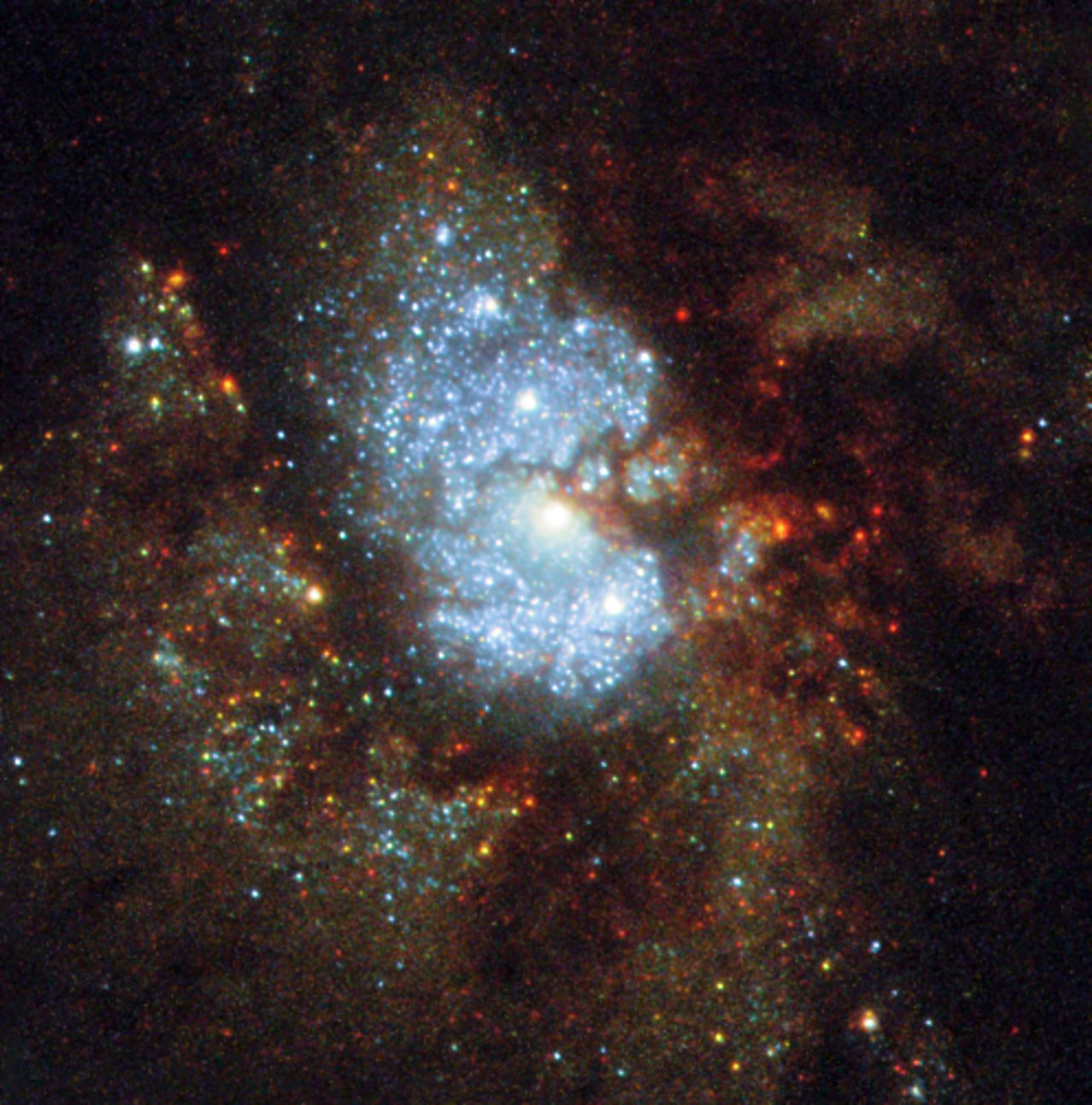'Hidden' Spiral Galaxy Sparkles in Breathtaking Hubble Photo

The spiral galaxy IC 342 shines prominently in this image from the Hubble Space Telescope, but viewing it in the night sky from Earth is much more challenging. In fact, it's nicknamed the Hidden Galaxy.
Although this spiral galaxy is relatively close to Earth, at just 10 million light-years away, it's difficult to see because it sits along the observable band of our own Milky Way galaxy. Indeed, it is "no easy feat" to view IC 342, European Space Agency officials said in a statement. To capture an image like this one, the Hubble Space Telescope has to peer through the space dust, the glow of cosmic gas and the brightly lit stars that sit inside the Milky Way and ultimately obstruct the view of IC 342.
The image of the galaxy isn't just remarkable because of how rare it is but also because of what the picture shows us about star births. The glittering aquamarine sparkles in the middle of the velvet-red cloud formations are the core of IC 342. Here, ionized hydrogen marks where new stars are arising.
This image was taken by the Hubble telescope in partnership with NASA and the European Space Agency.
Follow Doris Elin Salazar on Twitter @salazar_elin. Follow us @Spacedotcom, Facebook and Google+. Original article on Space.com.
Get the Space.com Newsletter
Breaking space news, the latest updates on rocket launches, skywatching events and more!
Join our Space Forums to keep talking space on the latest missions, night sky and more! And if you have a news tip, correction or comment, let us know at: community@space.com.

Doris is a science journalist and Space.com contributor. She received a B.A. in Sociology and Communications at Fordham University in New York City. Her first work was published in collaboration with London Mining Network, where her love of science writing was born. Her passion for astronomy started as a kid when she helped her sister build a model solar system in the Bronx. She got her first shot at astronomy writing as a Space.com editorial intern and continues to write about all things cosmic for the website. Doris has also written about microscopic plant life for Scientific American’s website and about whale calls for their print magazine. She has also written about ancient humans for Inverse, with stories ranging from how to recreate Pompeii’s cuisine to how to map the Polynesian expansion through genomics. She currently shares her home with two rabbits. Follow her on twitter at @salazar_elin.









